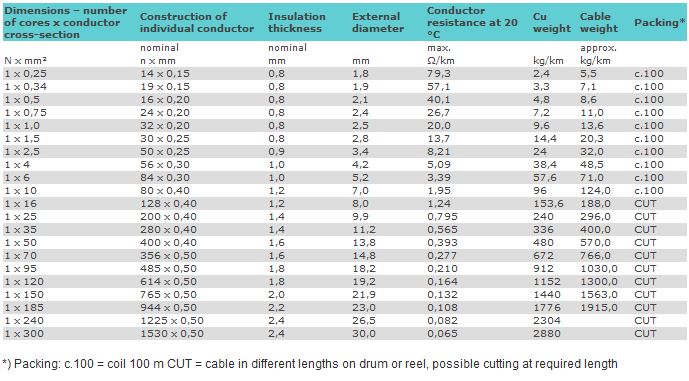Application
Silicone rubber is resistant to extreme temperature conditions, as for high (up to 180 °C, briefly even to 250 °C), so also for low (-60 °C) temperature. It has a high point (temperature) of inflammability, it is halogen-free, releases no corrosive gases at combustion, and around the conductor is formed additional insulation of silicone-oxide ashes. Due to a higher electrical resistance, tinned copper is also more suitable for higher temperatures (up to 220 °C) than bare copper. Such composition of these conductors makes them applicable in extreme temperature environment, for inst. in steel production, aircraft industry, same as in shipbuilding, cement plants and glass and ceramics factories, in electric power plants etc. They are also suitable for inner wiring of lighting, heating elements, burners, furnaces etc.
Standards
DIN VDE 0282 part 3
DIN VDE 0250 part 1
HRN HD 22.3 S3
IEC 60245-3
Construction
Conductor: tinned copper conductor, fine wired stranded, class 5 acc. to IEC 60228 / HD 383 / DIN VDE 0295
Insulation: silicone rubber
insulation colours: ![]()
Technical data
Temperature range:
operating temp.:
-60 °C up to +180 °C
short-term peak temp.:
220 °C
Nominal voltage: Uο/U = 300/500 V
Test voltage: 2000 V
Behaviour in fire: IEC 60332-1
Halogen-free: IEC 60754-1
Corrosiveness of combustion gases: not corrosive acc. to IEC 60754-2
Specific el. resistance of insulation: > 200 M Ω x km
Maximal tensile strength:
under normal conditions: 5 N/mm²
after ageing (240h / 200°C): 4 N/mm²
Minimal inner bending radius: 15D






